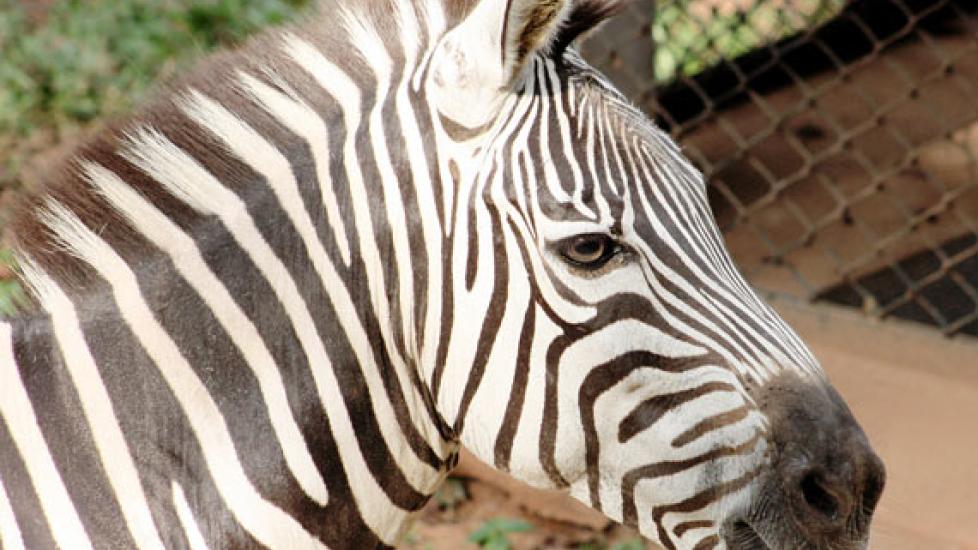Seeing Stripes, or Why Zebras Do Not Make Good Patients
Zebras are beautiful creatures. Their stripes have inspired numerous artists and fashionistas for centuries and they make a great addition to any safari park. But they are notoriously difficult to work with. In fact, they tend to have just plain nasty personalities. They are like the pretty girl in high school who turns out to be a sociopath and pulls your hair for no good reason, except these pretty beasts bite instead of pull and kick like there’s no tomorrow.
It’s been said that zebras can become tame but not truly domesticated, although there is the occasional report of someone riding a zebra under saddle.
I remember learning somewhere about the zebra personality before I actually had to work on one. So, when I got a call from the local zoo on a Saturday afternoon that Zuri, their three-year-old female zebra, just got impaled by an antelope’s horn in the abdomen, I knew what I could be up against.
Arriving through the back gate, I found Zuri confined to a stall. By peering through the bars, I couldn’t make out much except for a slight swelling sort of to the left side of her sternum. No blood, no seepage of vital bodily fluids - she actually looked quite content, for a zebra.
Naturally, my first inclination was to palpate the wound to see how deep it was. The worst case would be that the horn had penetrated the abdominal cavity and punctured a major organ; the best case would be that it was just a flesh wound.
"Can we put a halter on her?" I asked, and immediately received an incredulous look from the zookeeper. "You’ll need drugs for that, Doc," he said, and pulled out his tranquilizer gun. Calculating a relatively strong dose of horse tranquilizer, the zookeeper loaded up his gun and after about a minute of careful aiming, shot Zuri in the neck. Then we stood back and waited for the drug to take effect.
This was how the rest of the afternoon played out:
Zuri: groggy but still ornery, was kicking like a mad woman when I attempted to get close to any part of her body in a lame attempt to perform ANY level of physical exam.
Us: another dose of tranq.
Zuri: still groggy, still ornery.
Us: another dose of tranq, this time, missing the zebra and hitting the wall. Repeat.
Zuri: still groggy, still ornery.
Us: determined to at least get a look at the wound, I stood back and leaned down. What I could see was … not much. And then I was almost decapitated by flying hooves. Bad call. More tranq?
Zuri: not getting any groggier and maintaining orneriness, she seemed to tire of our pestering ways and air rifle. The tranquilizer seemed to have reached a plateau, and by that point, Zuri was loaded with enough to down a hippo. I was dubious about the benefit of giving her any more drugs and had to make a call, so the logic went this way: It had been over two hours since the wound occurred. If the abdominal wall had been breached, we would likely see more swelling and Zuri becoming sick. Instead, we saw minimal swelling and an animal that seemed to be mocking our attempts to perform legitimate veterinary medicine. I decided to keep her in the stall for observation overnight, with some crushed pain medication and antibiotics in her dinner.
So with me driving out of the zoo with my tranquilizer supply almost completely depleted, I couldn’t help but wonder what instigated the confrontation between antelope and zebra. I’ll bet you a million dollars the zebra started it.
As a post-script, Zuri recovered 100 percent from her injury. On my next visit to the zoo for something unrelated, I spied her in the pasture. I think she gave me a dirty look. I stuck my tongue out at her, for good measure.

Dr. Anna O’Brien
Image: Alexandra Lande / via Shutterstock
